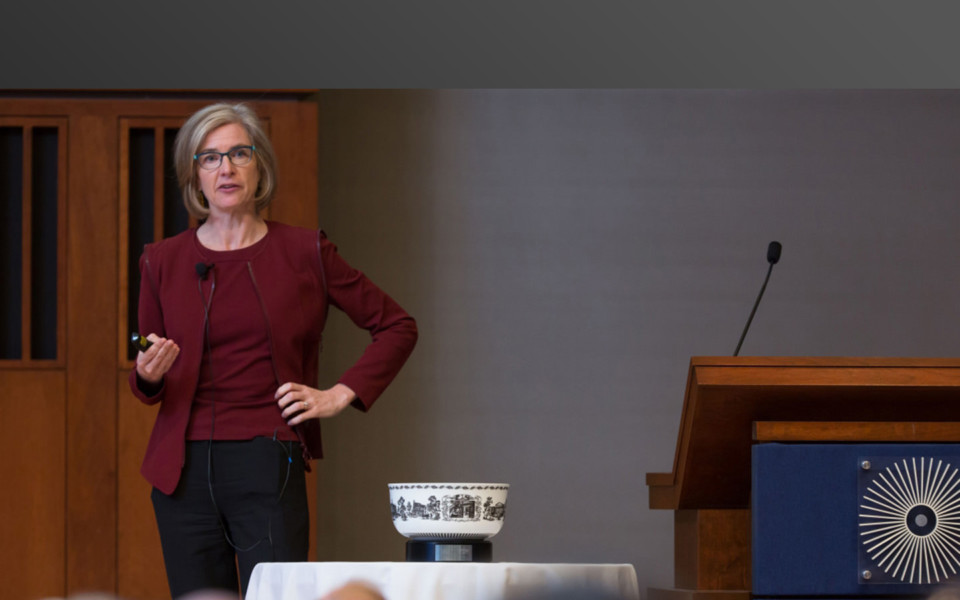Distillations Interview: Jennifer Doudna
Distillations talks to biochemist Jennifer Doudna about the discovery of CRISPR-Cas9, the tool’s promise, and dangers of its misuse.
Biochemist Jennifer Doudna and her colleagues rocked the research world in 2012 when they described a simple way of editing the DNA of any organism using an RNA-guided protein found in bacteria. Discovery of the CRISPR-Cas9 technology sharply accelerated work on human and nonhuman gene editing, helping researchers develop potential treatments for HIV, sickle-cell disease, and muscular dystrophy. Doudna, a professor at the University of California, Berkeley, and an investigator with the Howard Hughes Medical Institute, has become the public face of CRISPR and an advocate for robust public discussion of the ethical implications of gene editing. In November 2018 she visited the Science History Institute to give the annual Ullyot Public Affairs Lecture and receive the accompanying award. Before the talk Distillations writer Meir Rinde sat down with Doudna to find out what scientists can do with CRISPR, whether we should worry about designer embryos, and how to grow 500 tomatoes on a single plant.
This interview has been condensed and edited for clarity.
What do nonscientists and the public need to know about CRISPR and gene editing?
Maybe we could start with what I hope is an easy-to-understand explanation: what is gene editing? It’s a way of altering the DNA in cells, the code of life, if you will, in a precise fashion that allows things like changing DNA sequences that cause disease or introducing changes to DNA that allow scientists to understand what genes do and how they interact. You might say, “Well, that sounds cool, but it sounds really hard.” And it might sound like science fiction, and for a long time it was absolutely science fiction. And then over the last roughly 15 years or so, technologies for altering DNA sequences—and doing it precisely and inside of cells—have increasingly become available. Most recently, a technology known as CRISPR is the tool that has really opened up this area of science in a way that was not possible before. It’s a technology based on a bacterial immune system, [in which] bacteria find and cut up viral DNA, that is now being utilized to find and alter DNA sequences inside of cells or organs or even entire organisms.


